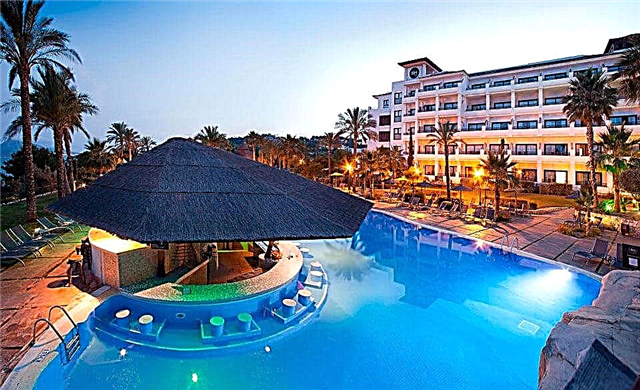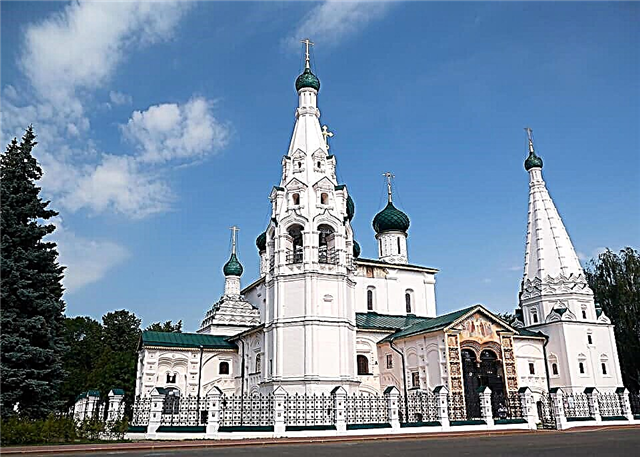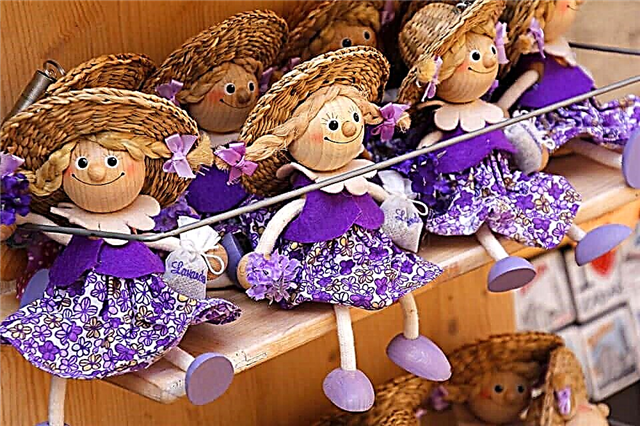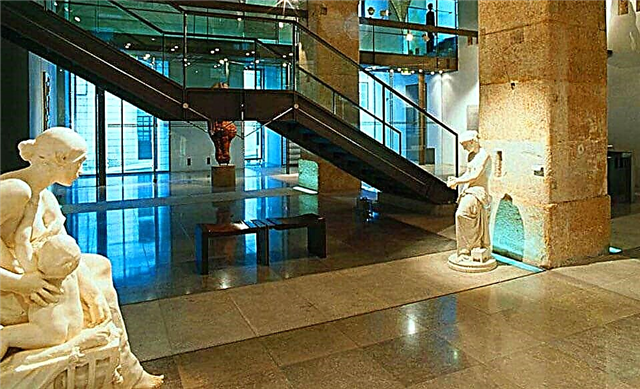Traveling to Portugal allows you to get a wonderful beach vacation, take part in a diverse cultural program, see the beautiful landscapes of the islands created by ancient volcanoes. All these opportunities are realized during a visit to the capital of the country, the city of Lisbon. The city, founded by the Phoenicians, has many architectural landmarks. Lisbon museums, galleries, ancient palaces, monasteries. The history of the life of the Portuguese kings is represented by preserved artifacts, exhibited in original buildings belonging to different rulers in past eras.
Castle of Saint George

In the center of the city, on a high hill, rises a majestic structure called the historical heart of the city. It is visible from anywhere in Lisbon. In ancient times, the castle was a fortress for the Romans, Visigoths, Moors. It was conquered by the first king of Portugal in 1147. Since then, the castle has been named in honor of George the Victorious. Since 1255, when the city became the capital of Portugal, the castle has been the seat of kings. Then it housed a prison, the headquarters of the child protection service. Since 1910, it has been included in the lists of national monuments.
After the earthquake, the damaged building was partially restored, a garden was laid out, in which peacocks calmly walk, and several viewing platforms were organized. Restoration work was carried out in 1940 and 1990. Inside the building there is an exhibition telling about the history of the city. There are small cafes and a restaurant on the territory of the castle. It is proposed to visit the Castle of St. George from 9 to 18 hours (from November to February 28) and from 9 to 21 hours (from March to the end of October).
Calouste Gulbenkian Museum

The private heritage from the collection of the famous oil tycoon consists of 6,000 exhibits. About a thousand of them take place in the permanent exhibition. In its main part there are huge collections of ancient objects from Egypt, Greece, Rome. Among them are famous vases, tombs, rare decorations from Persia. The second section of the exhibition contains artifacts of European art from different times, objects of the Middle Ages. A separate room houses manuscripts and books from different centuries.
The collection of European paintings is adorned with paintings bought during the sale of the Hermitage riches in 1930. Here you are invited to see several works by Rubens, Rembrandt, Eyck's baths, sculptures by Houdon. Separate rooms are occupied by canvases of the impressionists Renoir, Monet, Degas, a collection of antique furniture, gold and silver items. Dishes, watches, coins and many other rare items.
The art museum opened in 1969. In terms of the richness of its collections, it surpasses the collections of many state institutions. Temporary exhibitions on various thematic areas are often held here. Work continues from 10 am to 6 pm daily. Day off on Tuesday.
Maritime museum

Over 20 thousand exhibits (of which 6000 are elements of the permanent exhibition) demonstrate the smallest details of the history of the development of Portuguese navigation (thanks to the activities of the Portuguese monarch in 1863). There are old maps, simple and complex navigation devices, ship models, portraits of great admirals. Interesting exhibitions reflect the era of great geographical discoveries made during sea voyages. There are expositions in the wing of the building of the Manuelist monastery of the Jeronimites.
The late Gothic architectural monument is included in the list of UNESCO World Heritage Sites. According to legend, Vasco de Gamo prayed within the walls of this monastery before traveling to India. The wooden figurine of the Archangel Raphael, who accompanied him on his voyage, is considered one of the oldest exhibits in the exhibition. After a fire in 1916, it was possible to restore the work of the institution in 1948.
Many exhibits from the first collection have been lost; instead, models of modern ships from Portugal and other countries have appeared. Found two old globes, reproduced the furnishings of the king's cabin, portraits, personal belongings of famous sailors. The frigate Fragata D. Fernando II e Gloria is moored on the Tagus River and is open to visitors. You can get acquainted with the historical past of the art of navigation of the country from 10 am to 5 pm. Day off on Monday.
National Carriage Museum

Looking at the old carts, beautiful carriages, delicate carriages, one wants to sit in them and drive along the travel roads of the royal families of Portugal. The collection of unique carriages was created by the care of Queen Donna Amelia in 1905 and has become the most visited museum in the country. It is located in the arena (built in the 18th century) for horse riding training for members of the royal family. The building itself, painted with pictures of an amazing interior, created over 40 years, serves as a beautiful backdrop for unusual exhibits. There are 7 carriages in the main hall of the arena.
A new building designed by architect Paulo Mendes was built to display the real wealth from the vaults. Among the exhibits are royal phaetons, two-wheeled convertibles, and landau. Here you can see the old carriage of King Philip II, made of wood, upholstered in red leather. The carriage is famous for its seat with a hole in the center for use when needed. Heavy curtains were the only protection from rain, wind, sun.
Golden "Carriage of the Bride", "Carriage of the Oceans", striking with luxury, wealth, sculptural representation of sea discoveries. They were fulfilled by the country when laying sea routes connecting two oceans: the Indian and the Atlantic. The central part is occupied by the figure of a Lisbon girl (translated from Portuguese, this means a young lady). You can visit the beautiful exhibition halls in the two buildings on any day of the week (except Monday) from 10 am to 6 pm.
National Museum of Ancient Art

The collection of the artistic treasures of Portugal of the XIV - XIX centuries since 1884 was housed in the monastery of St. Francis. The number of exhibits increased rapidly and required a larger area for optimal placement of the building. It was built in the 90s of the past century on the site of an ancient monastery. The huge galleries on different floors of the new building house thousands of paintings, graphics, sculptures, antique furniture, rare jewelry and ceramics. Among the famous canvases are works by Albrecht Durer, Raphael, Bosch, Velazquez, etc.
The first floor is occupied by expositions of works by European masters. On the second floor, you can watch Asian and African art. The third floor is given to the works of the creators of Portugal. Endless streams of tourists pass next to the famous work of Bosch "The Temptation of St. Anthony". The Ancient Art Gallery is the largest in Portugal and is popular with tourists. The institution works on Tuesdays from 14 to 18 hours. Day off on Monday. From Wednesday to Sunday, the halls are open for visits from 10 am to 6 pm.
Azulejo Museum

The traditional craft of the Portuguese is unparalleled elsewhere in the world. The art of creating paintings from tiles on the basis of beautiful tiles was born here many centuries ago. The word Azulejo means a glazed ceramic piece. In the beautiful chapel of the monastery of the Mother of God, the first exhibition of elements of an ancient art form appeared. Its roots go back to the period of Moorish traditions that brought them from Arab culture.
Beginning in the 15th century, the first panels appeared in Portugal, paintings imitating luxurious carpets. The first tiles were made under the guidance of Flemish craftsmen. Already at the beginning of the 18th century, Lisbon began to be called the center for the manufacture of azulejos.The canvases consisted of decorative plant patterns, paintings on religious themes. There is a unique 16th century altar decorated with ancient tiles. Monasteries, churches, estates, palaces are gradually being decorated with tiles, painted in different colors, and complex ornaments.
Permanent exhibitions, exhibitions tell about the history of azulejos in Portugal. Many works were destroyed during the earthquake. A unique panel was created with a panorama of the city before the destruction. It is proposed to see him, to take part in master classes on making tiles from 10 to 18 hours on any day except Monday.
Oriental Museum

In the colonies of Portugal in the East, a long and difficult life passed. At this time, the Portuguese presence was reflected in art, clothing, furniture, and cult objects. At the same time, many local customs were borrowed and introduced into the life of the Portuguese. A huge number of artifacts of this time were brought to the country and made up rich collections of many galleries, exhibitions, permanent exhibitions.
Pictures, masks, textiles from China, Japan, Vietnam, Indonesia, India were housed in the former building of a salted cod warehouse. In 2008 it was restored and converted into a museum. There are many halls in it. For example, a room dedicated to the gods of Asia. Documents related to the colonial period (maps, diagrams), items in the form of antique jewelry from different countries.
There is a school on Asian culture, customs and cuisine on the territory. The top floor of the building is occupied by a restaurant with a menu of European and Asian cuisines. A café and a souvenir shop are located next to the entrance on the ground floor. It works from 10 am to 6 pm with a day off on Monday.
Chiado Museum

In the oldest district of Lisbon, many buildings have been restored that were damaged by the fire of 1987. The buildings of the Franciscan monastery housed a confectionery factory, an academy of arts, a library, and the National Gallery of Modern Art. Successfully carried out overhaul by the architect Jean Michel Vilmot, allowed to place here rich expositions from the collections of modern painting of Portuguese art. They cover the period from 1850 to 1960, combining works of romanticism, modernism, abstractionism, surrealism.
Permanent exhibitions are made in thematic areas and demonstrate the development of sculpture, painting by Portuguese masters. Among the famous works are exhibits created by the artist Columban Bordal Pineer (he was the director of the institution for a long time). Temporary exhibitions are held in a separate room. Frequently change and present works by artists from different countries. You can visit the gallery from 10 am to 6 pm every day (closed on Monday).
MAAT Museum

It is impossible not to notice the amazing architectural structure on the embankment of the Tagus River. I would like not only to walk along its roof overhanging the river, but also to look into the spacious, bright rooms. Find out all about the interesting exhibits standing there. It was opened on the site of an old power plant that honestly served the city for many years. Its equipment took its place among the unique exhibits next to the devices created by new technologies, designed by designers at the level of works of art. The main idea behind creating exhibitions with this name was the desire to combine art with the possibilities of modern technology.
Numerous exhibitions that take place regularly throughout the year present interesting new developments, including those using interactive methods. For example, the world of robotics amazes with unexpected solutions, real systems implemented in various branches of mechanical engineering. Sometimes it seems that these are almost people and will soon learn to think. You can visit IAAT exhibitions from 12 to 20 hours daily. Day off Monday.
National Archaeological Museum

After the abolition of monasteries in 1834, numerous items from churches, temples, monasteries were under the jurisdiction of the state. The decision to create an interesting gallery and place it in the premises of the Jeronimos Monastery was implemented in 1893 by the famous ethnographer of the country. The expositions represent various stages in the life of people on the territory of Portugal: inhabitants of the Mesolithic, Megalithic, Phoenicians, Greeks, Romans, Arabs. The collections contain works of famous painters from Portugal and Europe. Among them are works by Dürer, Bosch. Holbein, Velazquez, Raphael.
The exhibits brought from African and Asian countries during sea voyages are placed separately. Numismatic, jewelry, epigraphic collections are exhibited separately. During the excursion, interesting stories are told about jewelry from the Iron and Bronze Ages, sculptural exhibits of the Middle Ages with Christmas nativity scenes. Furniture, ceramics, porcelain, textiles, silver items are part of the permanent exhibitions. You can see them every day from 10 to 18 hours (Monday is a day off).
National Museum of Costume and Fashion

The old building, surrounded by a botanical park, houses exhibitions filled with lush outfits from different eras. Among them are women's, men's, children's dresses belonging to different segments of the Portuguese population. The exhibited models of clothing are genuine historical costumes of the period of the 17th-21st centuries of residents of different countries of Western Europe. The decision to create was made in 1977 after the 1976 exhibition showcasing the royal wardrobe.
The collection was replenished by the donation of items from private collections. The expositions are located in different halls according to thematic focus. On the ground floor, there are models of the Rococo style. Intricate frames, numerous lace frills, embroidery, corsets are essential elements in men's and women's clothing. At the beginning of the 19th century, they completely disappear. The Empire style comes into fashion. Instead of brocade, velvet, the first place is given to light muslin.
Sleeves of a bizarre shape, borrowed from the Renaissance (they were called "leg of lamb", "ham"), gradually appear in fashionable elements. The modern period is represented by the classic Chanel costume, sundresses, disco of the 80s. Lingerie, corsets, frames, pads and other accessories are presented in separate rooms. Home textiles in the form of lace curtains, tablecloths, Victorian bed linen. There is a restaurant, library, gift shop on the territory. The institution opens at 10 am and works until 6 pm. Day off on Monday.
Water museum

Drinking water, an invaluable gift of nature, has always played a special role in the choice of a place of settlement, in the development of cities. The history of water supply begins from the time of the first aqueducts, the creation of the necessary equipment, methods of purification, and control of water quality. Each century has brought its own new developments, discoveries in the improvement of the processes of delivering water to cities. In 1987, the Water Museum was opened, which received an award from the Council of Europe.
It includes four ancient objects: an aqueduct of 1746, two reservoirs, a pumping station. The station building (in an old monastery), erected in 1880, is used for organizing exhibitions and permanent exhibitions. Here you can see the first steam engines, pumps that delivered water from various objects of the aqueduct. In the hall with permanent expositions, models, installations, demonstrating the history of water supply and wastewater disposal in Lisbon are presented.
Many devices are in working order and are used for informational lectures. They help to find out interesting information about the interconnected work of all objects of the city's water system. As through underground aqueducts, water flows into the 30 fountains of Lisbon. The institution works daily from 10 to 18 hours.
Archaeological Museum in the Monastery of Karmu

The first liturgy in the ancient monastery, built on the site of a Carmelite church at the top of the mountain, was held in 1407. Beautiful Gothic towers, decorated with numerous lancet windows, soared high into the sky. Residential buildings for monks appeared. Gradually, a rare collection of tomes was formed in a huge library, the sarcophagus of Nunu Pereiri was carefully kept. He handed over his fortune to the monastery. Life flowed with its own customs and traditions.
Everything changed at one point in 1755. A powerful earthquake destroyed almost all the buildings of the monastery. The monks settled elsewhere. The remaining structures were donated in 1864 to the Association of Archaeologists. Since that time, the accumulation of archaeological artifacts began, telling about life in this amazing place. The entrance to the exhibitions is organized through the portal of the preserved walls of the Gothic church. The famous outlet is half destroyed. Having examined the central part of the church, you immediately find yourself in the courtyard, decorated with ancient bowls made of stone, images of ancient family coats of arms.
The closed part of the church contains artifacts from many periods of Portugal's life: prehistoric tools, azulejo tiles, architectural structures in the form of fountains, stucco moldings. Unusual mummies from Peru, Egyptian sarcophagus. There is a cozy cafe in front of the monastery walls. To get to the top of the mountain to the ruined monastery with sad evidence of destruction, oblivion is offered on a special Santa Justa elevator from Monday to Saturday (from 10 to 19 hours). Day off on Sunday.
House-Museum of Medeiros and Almeida

Since 1973, the house of the collector Dr. Antonio Medeiros and Almeida has housed a rich exhibition from the collections of the owner of the house. They were created by the owner of the house in the 70s of the last century. 25 halls with an unusual interior are filled with paintings, sculptures, furniture, tapestries, ceramics. The three permanent collections include: 225 watch models from the 16th to the 20th centuries. Collection of rare ceramics from the Han dynasties of China until the 18th century. Silver jewelry made in England, Portugal by famous craftsmen of the 15th and 16th centuries.
210 fans of the 16th – 18th centuries. The house was built in 1672 as a hunting estate. Gradually, it turned into a luxurious palace surrounded by a Renaissance-style park. The exterior of the building resembles a small painted jewelry box. Walls, facades amaze with the beauty of tiles made by masters of Holland and Portugal. One would like to inspect it from the outside and be sure to enter the inner chambers. This can be done from 10:00 to 17:00 on Saturday and from 13:00 to 17:30 from Tuesday to Friday.
Money Museum of the Bank of Portugal

The Church of Saint Julian, erected in 1810, was taken over by the Bank of Portugal in 1930. The original baroque style, complemented by elements of modern design, has been successfully used to organize unique expositions of the numismatic collection. On four levels, there are convenient stands with ingots, coins, banknotes, objects that played the role of money in ancient times. The expositions reflect the evolution of money, which has left a mark on the history of trade, the everyday life of many European countries.
The building contains a rich collection from the time of the great geographical discoveries to the present day. The main exhibition is called Money of the West of the Iberian Peninsula. During the excursion, it is proposed to find out how the country's coin was created according to the European program of 2004. The main requirement for its release is compliance with the theme approved by the European Union, the application of a logo from the "Euro Star" series. View collections, learn the history of banking, see a gold bar valued at half a million € is offered from 10 am to 6 pm any day from Wednesday to Saturday.
City Museum

The collections, consisting of elements of the country's cultural, historical and political heritage over several centuries of its life, are located in chronological order in the main building of the Pimenta Palace of the 18th century. The entire history of the city is reflected in interesting exhibitions of paintings (their number is over 1400 and belongs to different genres), sculptures, ceramics, archaeological finds (some of them date back to 300,000-100,000 BC). Among the paintings there are images of the city before the earthquake. There are many books, icons, maps, tombstones, handmade tapestries, drawings, important documents from different times.
The grandiose layout of Lisbon before the 1788 earthquake showcases the finest architectural details. The exhibition collection of azulejos and panels with the faces of saints based on the famous tiles is considered the largest in the country.
Separate pavilions (Black and White) have been built for temporary exhibitions. A separate exposition is devoted to epigraphy (records made on stone, metal). There are sculptures and ancient statues in the garden next to the building. The collections reflect a long historical period from the Paleolithic to the present. They were collected for several centuries. Visiting the exposition is offered from Tuesday to Sunday from 10 to 18 hours.
Rafael Bordalu Pinheiro Museum

The works of the famous cartoonist, ceramist of Portugal are widely known, are popular and loved by the inhabitants of the country.. The living paintings reflect the period 1846-1905. The garden contains interesting exhibitions from the works of Raphael Bordalu Pinheiro. The porcelain sculptures were created by the extraordinary fantasy of the master. Huge snakes, lizards, toads, bees, mushrooms bask in the sun like real ones, rest in the shade of the garden.
In 1889, at the International Exhibition in Paris, the author was awarded a gold medal (at that time the famous Eiffel Tower was exhibited here). At a certain stage in his life, Pinheira was the editor of a comic magazine, an employee of the newspaper Illustrated London News. In 1885, he opened a faience factory in Portugal, which became the most prestigious ceramics factory in Europe. Her products bear the Bordalo Pinheiro trademark. Many of the works are exhibited in the villa opposite the City Museum.
Today, almost all of Pinheiro's works are collected. These are 1200 ceramic items, 3500 sketches, 900 photographs, over 3000 publications, about 3000 paintings. Popular with the residents of the city is a caricature of a little man who came from the provinces. The figure is called "Z'e Povinho". You can go to the garden with the works of the master from Tuesday to Monday from 10 to 18 hours. At the same time, visit the library, take part in thematic conferences, seminars, visit a gift shop.
Roman Theater Museum

Lisbon was called Olissipo two thousand years ago and was part of the Roman Empire. In the ancient city, already in the first half of the 1st century AD, a large theater functioned for 5 thousand spectators. Its ruins were opened to the attention of residents after the devastating earthquake of 1775. Archaeological excavations began in 1965. The result was the restored stands, stage, orchestra area, part of the floor made of pink marble, fragments of mosaic paintings, decorative elements made by craftsmen of the ancient period.
This site was included as an interesting exposition of a modern archaeological museum. A new building was erected over the ruins and various exhibits found during excavations were placed in it. Nearby there is a site with archaeological research of other ancient buildings. Exhibitions telling about the history of the Roman theater are located in the neighboring building, which belonged to the city's bishops (it was built in the 18th century). Among them are many elements from the ancient theater. Visiting exhibitions is offered from Tuesday to Sunday from 10 to 13 and from 14 to 18 hours.
Electricity Museum

For the third decade, this place has been loved by children, especially boys. Here are the active exhibits that you can twist and study.Interactive stands are located in the building of a thermo station that generated electricity for the city. Many devices are in working order and are interesting for educational purposes. The expositions present diagrams, documents, educational materials on electricity.
The building of the first power plant itself is considered an example of the country's industrial architecture. Now an important scientific and cultural center functions in it. Celebratory thematic events, concerts, conferences are held here. These are, for example, the festivals Sunny, Children's, the month of science, the Solar Rally holiday. The building is located in the Belenya district. Open to the public from Tuesday to Sunday from 10 am to 6 pm.
National Museum of Natural History and Science

Since 2011, a state institution has begun to work, uniting several museums in Lisbon. A huge collection, created over 250 years, is of interest to people of all ages. The expositions are divided into several thematic areas. In one of them, you are invited to get acquainted with the amazing world of animals that lived in different eras on our planet.
Dinosaurs, fossils, ancient fish, the real size of extinct animals are of particular interest to children. For recreation, children can watch the popular cartoon "Ice Age". Astronomy lovers have the opportunity to gaze at the stars in a luxurious planetarium. Botanical masterpieces have been awarded the status of a national monument.
Of particular interest is the collection of butterflies in a special room of the museum. The garden is dominated by a dracaena, which is over 400 years old and has many plants brought from different countries of the world. The territory often hosts interesting exhibitions, seminars, conferences in many scientific areas: zoology, botany, anthropology (there are about 1,700 human skeletons here). You can visit an interesting place every day, except Monday, from 10 to 17 hours.











